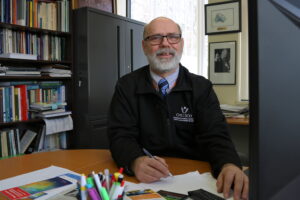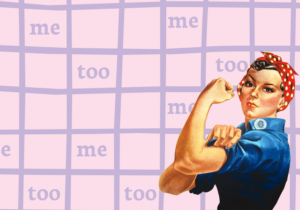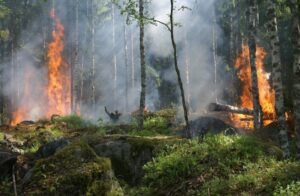 On April 23, Albertans will cast their votes and select a new provincial leader. This election will make history, because for the first time in more than four decades, Alberta’s Progressive Conservatives are battling a strong challenger for the leadership, and both of the principle combatants on this ballot are two women with contrasting political ideals.
Don Braid in the Calgary Herald (March 25) summed the election up by saying the major divide in this year’s Albertan electoral race largely exists between the progressives and the social/fiscal conservatives.
The two major contenders in this political race are representing different aspects of conservatism. Danielle Smith – the leader of the new Wildrose Party – is a budget conscious frontrunner with political ideas more in tune with our Conservative Prime Minster, Stephen Harper. Alison Redford leads the Progressive Conservatives and she’s a centrist red Tory – a conservative with a social conscience.
Albertan Liberal leader Raj Sherman and Albertan New Democrat hopeful Brian Mason appear to be two sensible and intelligent men with much to offer to Alberta, but neither of these leaders will be successful in the race for the premiership in a province which historically favours the politics of right wing populism. As a footnote – the Green Party in Alberta is a very enthusiastic and grassroots-based organization, but the Greens will also fail to gain any significant political momentum because this province’s economy is ruled by the oil industry.
Alison Redford’s version of high-spending conservatism appears to evoke the days of former Albertan premier Peter Lougheed, who first led the Conservatives to victory in August 1971 after ousting the creaky and well-aged Social Credit Party who had ruled Alberta since 1935.
Unlike her Wildrose contender, Redford is a firm believer in public education, healthcare and thinks the government should intervene into the occasional economic matter. If elected, Redford has promised to build 50 new schools at once and have 70 more constructed over the next four years. She will also inject $3 billion into Albertan businesses.
Danielle Smith is the photogenic leader of the fledging Wildrose Party. Smith’s priorities concentrate on low-government spending and social conservatism – such beliefs are held in high esteem especially in Alberta’s rural southern ridings. The Wildrose Party are disciples of former Albertan premier Ralph Klein who ruled Alberta throughout much of the 1990s. Klein was a neoliberal Progressive Conservative who believed in a Laissez-faire economy ruled by Adam Smith’s invisible hand.
Danielle Smith has promised to cut the government back and introduce cost-cutting measures and believes Redford’s governance has been wasteful in many instances. She once referred to the recent $275 million renovation of the federal buildings in Edmonton as a “Taj Mahal of provincial waste,” (Edmonton Journal, March 29). Smith further insists that the Albertan conservative government should not have spent $2 billion on carbon capture technology.
Smith’s version of social and economic conservatism appears to characterize America’s Tea Party Republicanism. One of Smith’s more interesting policies includes a proposal to allow public servants to opt-out from providing essential services to those whom they find to be objectionable on moral grounds. Essentially, a doctor, priest, teacher or anyone else within Alberta’s public sphere would be able to have the legal right of refusal if this law passes through the legislature.
A Leger poll published in March for The Edmonton Journal and The Calgary Herald suggested that Redford is barely in the lead with the Tories running at 37 per cent, while the Wildrose party is just slightly behind at 34 per cent. Redford’s team won the poll on questions relating to international and national leadership, however Smith appeared to be the more likeable candidate overall.
Redford and Smith are neck-to-neck in the polls in this viscous political battle and the negative campaigns continue to escalate. Since the Albertan provincial election in 2012 has proven to be so contentious, the Leger polls are predicting a high voter turnout of 84 per cent.
On April 23, Albertans will cast their votes and select a new provincial leader. This election will make history, because for the first time in more than four decades, Alberta’s Progressive Conservatives are battling a strong challenger for the leadership, and both of the principle combatants on this ballot are two women with contrasting political ideals.
Don Braid in the Calgary Herald (March 25) summed the election up by saying the major divide in this year’s Albertan electoral race largely exists between the progressives and the social/fiscal conservatives.
The two major contenders in this political race are representing different aspects of conservatism. Danielle Smith – the leader of the new Wildrose Party – is a budget conscious frontrunner with political ideas more in tune with our Conservative Prime Minster, Stephen Harper. Alison Redford leads the Progressive Conservatives and she’s a centrist red Tory – a conservative with a social conscience.
Albertan Liberal leader Raj Sherman and Albertan New Democrat hopeful Brian Mason appear to be two sensible and intelligent men with much to offer to Alberta, but neither of these leaders will be successful in the race for the premiership in a province which historically favours the politics of right wing populism. As a footnote – the Green Party in Alberta is a very enthusiastic and grassroots-based organization, but the Greens will also fail to gain any significant political momentum because this province’s economy is ruled by the oil industry.
Alison Redford’s version of high-spending conservatism appears to evoke the days of former Albertan premier Peter Lougheed, who first led the Conservatives to victory in August 1971 after ousting the creaky and well-aged Social Credit Party who had ruled Alberta since 1935.
Unlike her Wildrose contender, Redford is a firm believer in public education, healthcare and thinks the government should intervene into the occasional economic matter. If elected, Redford has promised to build 50 new schools at once and have 70 more constructed over the next four years. She will also inject $3 billion into Albertan businesses.
Danielle Smith is the photogenic leader of the fledging Wildrose Party. Smith’s priorities concentrate on low-government spending and social conservatism – such beliefs are held in high esteem especially in Alberta’s rural southern ridings. The Wildrose Party are disciples of former Albertan premier Ralph Klein who ruled Alberta throughout much of the 1990s. Klein was a neoliberal Progressive Conservative who believed in a Laissez-faire economy ruled by Adam Smith’s invisible hand.
Danielle Smith has promised to cut the government back and introduce cost-cutting measures and believes Redford’s governance has been wasteful in many instances. She once referred to the recent $275 million renovation of the federal buildings in Edmonton as a “Taj Mahal of provincial waste,” (Edmonton Journal, March 29). Smith further insists that the Albertan conservative government should not have spent $2 billion on carbon capture technology.
Smith’s version of social and economic conservatism appears to characterize America’s Tea Party Republicanism. One of Smith’s more interesting policies includes a proposal to allow public servants to opt-out from providing essential services to those whom they find to be objectionable on moral grounds. Essentially, a doctor, priest, teacher or anyone else within Alberta’s public sphere would be able to have the legal right of refusal if this law passes through the legislature.
A Leger poll published in March for The Edmonton Journal and The Calgary Herald suggested that Redford is barely in the lead with the Tories running at 37 per cent, while the Wildrose party is just slightly behind at 34 per cent. Redford’s team won the poll on questions relating to international and national leadership, however Smith appeared to be the more likeable candidate overall.
Redford and Smith are neck-to-neck in the polls in this viscous political battle and the negative campaigns continue to escalate. Since the Albertan provincial election in 2012 has proven to be so contentious, the Leger polls are predicting a high voter turnout of 84 per cent.









